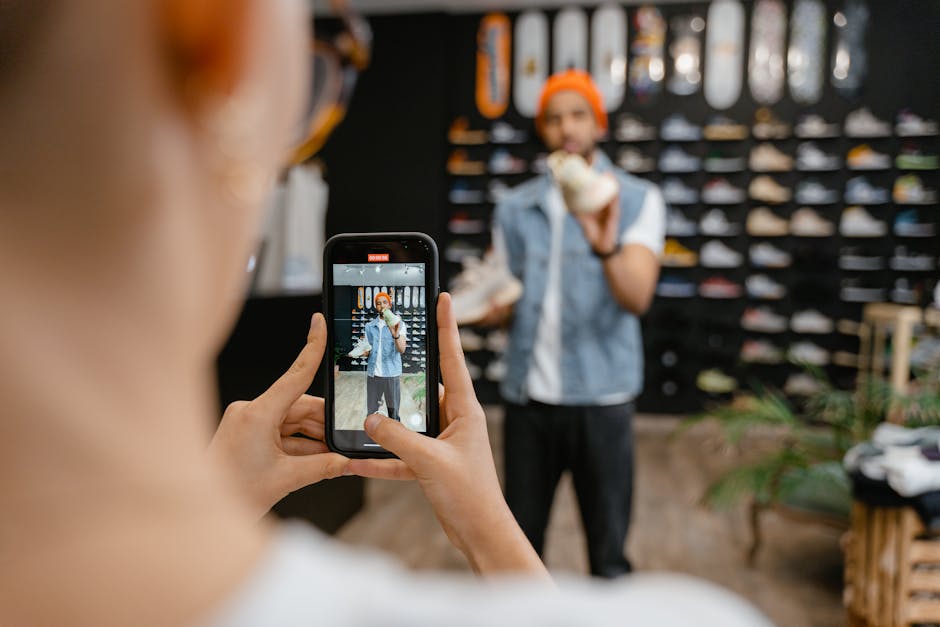Optimizing Your Online Store for Conversions
Are you struggling to turn visitors into buyers on your online store? You’re not alone! Many store owners face this challenge. In fact, studies show that the average e-commerce conversion rate is around 2-3%. That means most of your visitors leave without buying anything. Lets dive into how you can optimize your online store for better conversions, turning those visitors into loyal customers.
What Does “Optimizing for Conversions” Mean?

Simply put, optimizing for conversions means making changes to your online store to encourage visitors to complete a purchase. Think of it like setting up a cozy coffee shop. You want your guests to feel welcomed, find what they need easily, and, ultimately, enjoy their experience enough to make a purchase.
Why Are Conversions Important?

Conversions are the lifeblood of your online store. Higher conversion rates mean more sales, which leads to more revenue. For example, if you sell a product for $50 and improve your conversion rate from 2% to 3%, that could mean an extra $1,000 a month!
In this article, well explore various strategies to boost your conversions. Lets get started!
How Can You Enhance Your Stores User Experience?

User experience (UX) is crucial. If shoppers find your store difficult to navigate, they will likely leave. Here are some key UX tips:
- Simple Navigation: Organize your products into clear categories. If someone is looking for shoes, make sure they can find them easily.
- Fast Loading Times: A slow website frustrates users. Aim for a load time of under three seconds.
- Mobile Optimization: With more shoppers using their phones, ensure your store looks great on mobile devices.
Remember, a smooth shopping experience keeps customers coming back!
What Makes Product Pages Stand Out?

Your product pages are often the first place a customer will land. Make them count! Heres how:
- High-Quality Images: Use clear, high-resolution images. Show your products from different angles and in use. This is like window-shopping for online users.
- Compelling Descriptions: Write clear and engaging descriptions. Highlight the benefits, not just the features. Instead of saying, This jacket is blue, say, This blue jacket will keep you warm on chilly nights.
- Customer Reviews: Positive reviews build trust. Encourage satisfied customers to leave feedback.
These elements can significantly boost buyer confidence.
How Important Are Pricing Strategies?
Setting the right price can make or break a sale. Here are some smart pricing strategies:
- Competitive Pricing: Research what similar products cost. Pricing too high may scare away customers, while pricing too low could make them question quality.
- Offer Discounts: Everyone loves a deal! Limited-time offers create urgency. For example, Get 20% off your first order!
- Free Shipping: Consider offering free shipping over a certain amount. Many shoppers abandon their carts because of high shipping costs.
These pricing strategies can convince visitors to click that Buy Now button!
How Can You Build Trust with Your Customers?
Trust is vital in online shopping. Heres how to establish and maintain it:
- Secure Checkout: Ensure your checkout process is secure. Look for HTTPS in your URL. Customers need to feel safe sharing their payment information.
- Easy Returns: Offer a clear return policy. If customers know they can return items easily, they’re more likely to buy.
- Clear Contact Information: Provide various ways for customers to reach you. Include a phone number, email, and even live chat if possible.
A trustworthy store encourages repeat business.
Are You Using Effective Calls to Action?
A call to action (CTA) tells your visitors what to do next. Strong CTAs can lead to higher conversions. Here are some tips:
- Be Direct: Use clear language. Phrases like Shop Now or Get Yours Today are effective.
- Use Contrasting Colors: Make your buttons stand out. A bright button on a neutral background draws attention.
- Place CTAs Strategically: Position CTAs where they can’t be missed, like above the fold on your product pages.
Good CTAs guide your customers toward making a purchase.
What Role Does Social Proof Play?
Social proof, such as testimonials and user-generated content, can enhance your credibility. Heres how to leverage it:
- Showcase Reviews: Display positive customer reviews prominently on product pages.
- Feature User Photos: Encourage customers to share photos of their purchases on social media. This builds community and provides authenticity.
- Highlight Bestsellers: Show which items are popular. If others are buying it, new customers will feel more confident.
Social proof can significantly influence potential buyers.
How Can You Use Email Marketing Effectively?
Email marketing remains one of the best ways to boost conversions. Here are key strategies:
- Build Your List: Use sign-up forms on your website to collect emails. Offer a discount for new subscribers.
- Personalize Your Messages: Tailor your emails based on past purchases. A simple We thought youd like this! can go a long way.
- Send Cart Abandonment Emails: If someone leaves items in their cart, follow up with a reminder. Include an incentive to complete the purchase.
Effective email marketing can help convert hesitant buyers.
What Tools Can Help You Analyze and Improve?
Using the right tools can make a huge difference. Here are a few to consider:
- Google Analytics: This free tool tracks visitor behavior. Discover which pages are popular and where users drop off.
- Heatmapping Tools: Tools like Hotjar show where visitors click and scroll. This helps you understand user behavior.
- A/B Testing: Test different versions of your website elements to see which performs better. For example, try different CTA colors or button placements.
Analyzing data helps you make informed decisions.
Common Misconceptions About Online Shopping
Lets clear up a few myths:
- Everyone buys online. Not true! Many people still prefer shopping in-store. Your goal is to convert online visitors.
- High traffic guarantees sales. More visitors don’t always mean more sales. Focus on optimizing the user journey.
- Discounts are the only way to sell. While discounts attract customers, quality and experience are key factors in long-term loyalty.
Understanding these misconceptions can help you focus on what truly matters.
What Are the Next Steps for Your Online Store?
Ready to optimize your online store for conversions? Start with these actionable takeaways:
- Review your user experience. Is your store easy to navigate?
- Enhance your product pages with high-quality images and compelling descriptions.
- Build trust through secure checkout options and clear return policies.
- Implement effective calls to action and leverage social proof.
- Utilize email marketing to reconnect with potential customers.
- Analyze your data regularly to make data-driven decisions.
By taking these steps, youll be well on your way to increasing your conversion rates!
For more insights on improving your store’s performance, check out Shopifys guide on conversion rate optimization.
Remember, every little improvement adds up. With patience and a willingness to adapt, you will see results!



